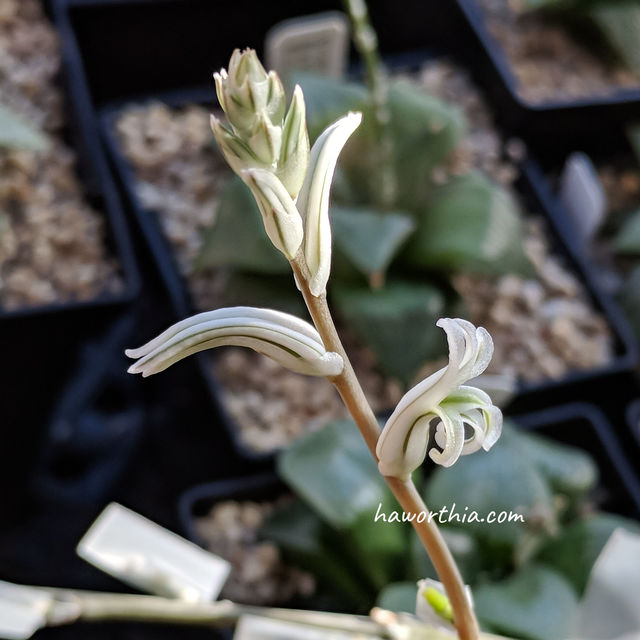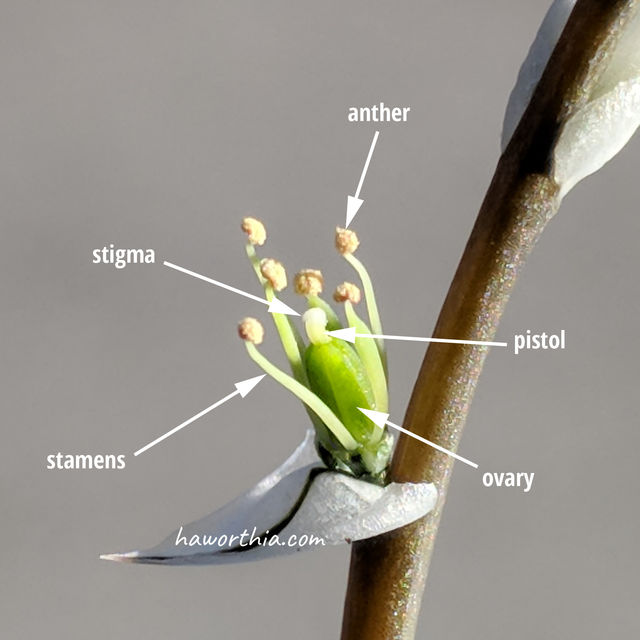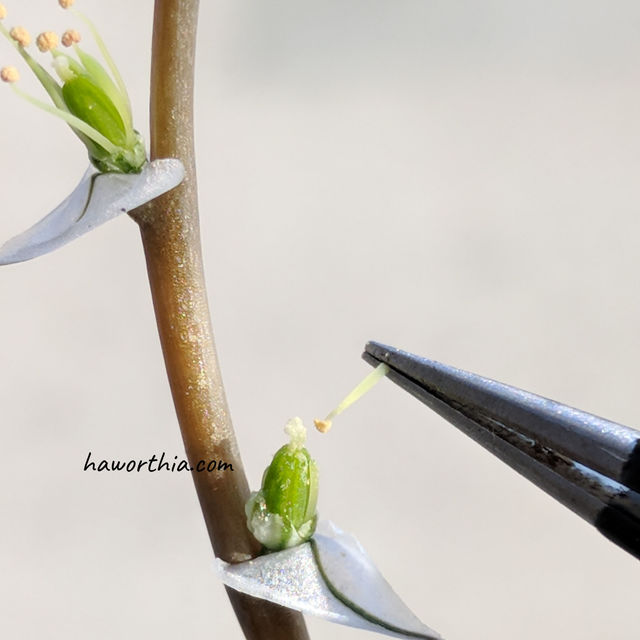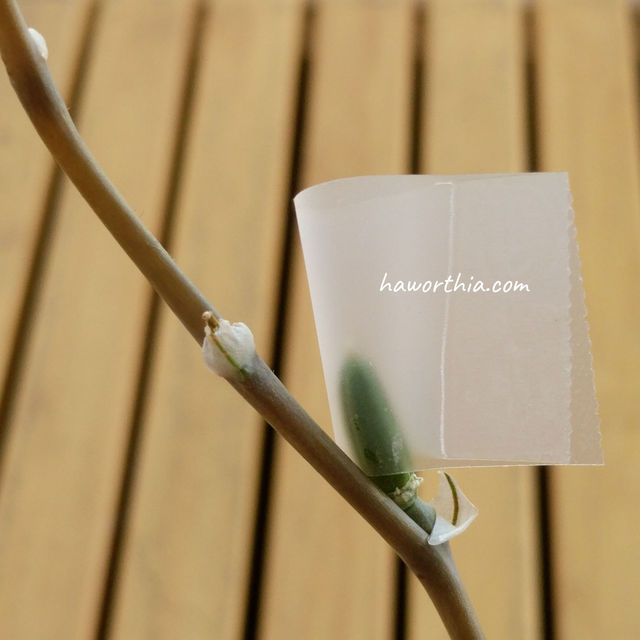Pollination
Many growers consider breeding new cultivars by pollination as the most fun part of growing Haworthias, which involves the search for new patterns, colors, shapes, and textures. Pollination can only be successful between two genetically different plants. And in many cases, hybridization can be done between different species in the same genus, even between genera in the Aloeae tribe.
A pair of fine tweezers and a headband magnifier are useful tools for pollination. Tweezers could be sterilized before using.

The flowers on a stalk bloom from bottom to top. When the upper parts of the petals curl outwards, a flower is fully opened and as a male parent, its pollens can be used. As a female parent, its stigma will still need ~2 more days to mature. At that time, the stigma will elongate and swell slightly. For pollination, it is recommended to choose a flower that just opened as the male parent to cross with a female parent which opened a few days earlier.

The best time for pollination is from noon to late afternoon. Carefully remove all the petals of both parents. Then remove all stamens of the female parent. The stamens can be used for pollinating other plants later. Pluck 1~2 stamen from the male parent and rub the anthers to the stigma of the female parent, until some transferred pollen can be seen. Operate gently to not break the stigma. The female parent can be pollinated for ~2 consecutive days to improve the success rate.

Keep the pollinated plant in a cool and shaded place to prevent pollens from drying out quickly. After ~1 week, if the ovary becomes green and swollen, the pollination was successful.
Collect Seeds
The seed pod will keep growing for another ~2 weeks. Once it matures, the pod will snap open to spill the seeds. To not lose the tiny black seeds, when the color of the pod turns darker, loosely wrap it with transparent sticky tape and leave the top opened. This allows the pod to breathe while keeps all seeds inside it.

